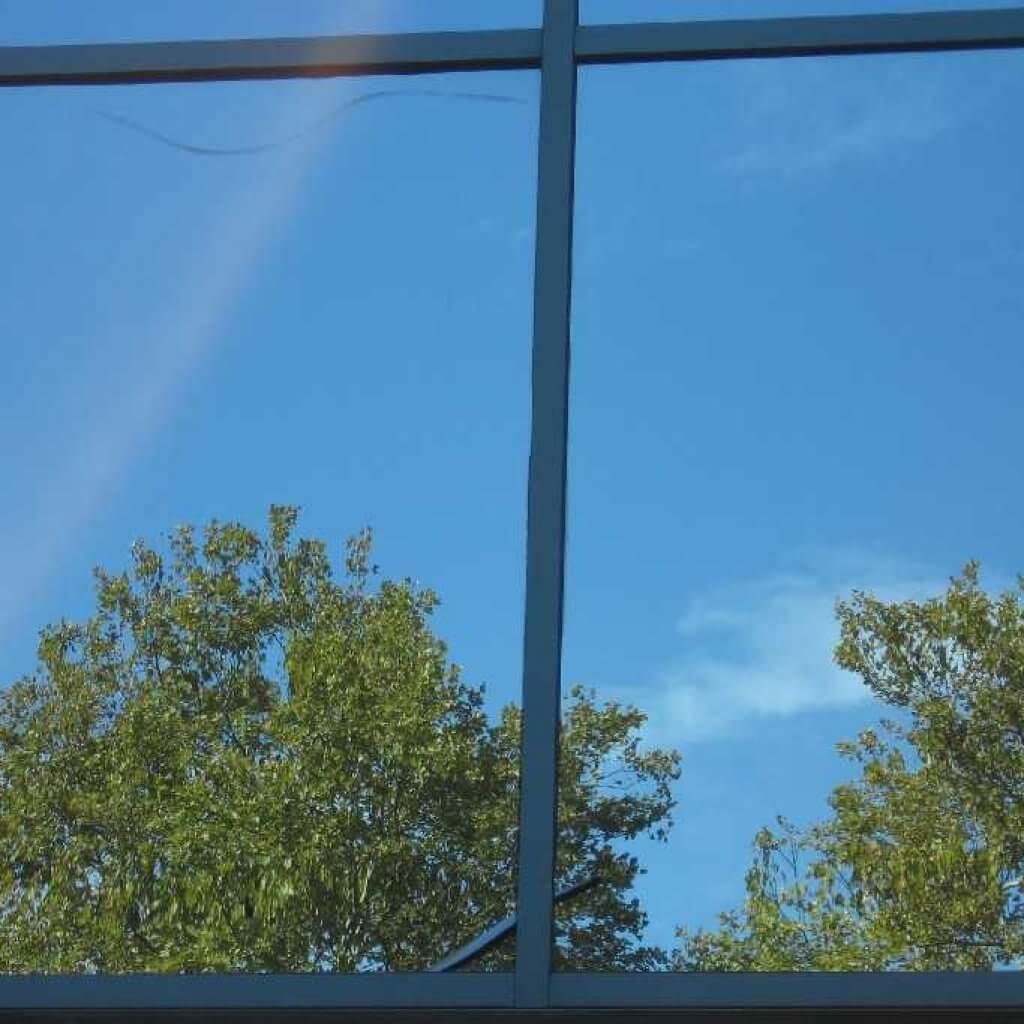Each year up to 1 billion birds die after hitting glass surfaces in the United States. Why do birds hit windows? Birds collisions occur for two primary reasons:

There are many questions about birds' relationship with glass and windows. Several of the most common are:
Can birds see glass?
Can birds see glass windows?
Can birds see through glass?
Despite claims that humans — unlike birds — can see glass, the truth is that glass presents problems to both people and birds.
When we bump into unmarked doors and windows, minor bruises and embarrassment are the typical results. For birds, however, the impact can result in instant death or serious, often fatal, injuries. Why? Birds tend to collide with glass at high speeds and their small bodies, composed of hollow bones, leave them particularly vulnerable to injury.
Even though people cannot see glass, from a young age we are able to grasp the concept of glass as a solid, transparent material. Detecting and avoiding glass then becomes an exercise in learning the cues that signal its presence, including window frames, door handles, and our location relative to building features.



So why can't birds see glass? The reason is that they do not learn the same visual cues as humans. As a result, glass is undetectable for them. Birds may learn about individual pieces of glass in an area where they live, through repeated interactions — if they survive the initial collision — but they remain unable to generalize from the experience and remain susceptible to collisions with other structures.
Collisions in the U.S. are most frequent during spring and fall migration, as enormous numbers of birds move between northern breeding grounds and southern wintering grounds. The largest number of collisions occur during the fall, when migrants include both adult birds and their offspring.
However, because birds can't see glass, dangers exist for birds year-round, especially glass near bird feeders and bird baths. Resident birds, particularly juveniles, tend to collide more often with glass in summer as they explore local environments. Collisions also happen all winter long.
When people first learn about glass collisions, many assume that brightly lit skyscrapers at night pose a special threat. However, most collisions take place during the day, and almost half occur at home windows; low-rise buildings account for almost all of the rest. Because of their relative rarity, buildings over 11 stories cause only 0.1 percent of all building collisions in the United States. However, tall buildings – especially their lower floors — can still cause a lot of collisions, so making a significant reduction in collisions means working to reduce collisions at all buildings.
ABC is working hard to make federal buildings bird friendly. Join us today and ask Congress to pass the Bird-Safe Buildings Act!
Scientists are still investigating the influences of light and other electromagnetic radiation on the behavior of migrating birds, but some patterns have emerged.
Artificial lights at night do influence collisions. Many species migrate at night, and lighting draws them to developed areas. This happens in large cities but also in areas with much less pervasive lighting, like highways, parking lots, and suburban malls.
Because light attracts migrating birds, they often stop to rest in developed areas during their journeys. This means that when these birds forage the next day, they are more likely to encounter, and collide with, glass. Turning lights off overnight, or at least before birds descend in the early morning, can reduce the number of birds near buildings and therefore reduce collisions.
Bird-Friendly Building Design provides a complete overview of collisions and solutions. This includes information on how birds see the world, the threats that glass poses, collision prevention techniques, and the science behind those solutions. The guide can be ordered in hard copy or downloaded free of charge.
Looking for glass for a new building, or a solution to fix existing windows? Search our comprehensive material database to find the right product.
Visit our photo gallery to see how a variety of materials and techniques can be used to make buildings safe for birds and great for people.
Check out BirdCalls Blog for frequent updates and insights into birds and window collisions…. Read more >>